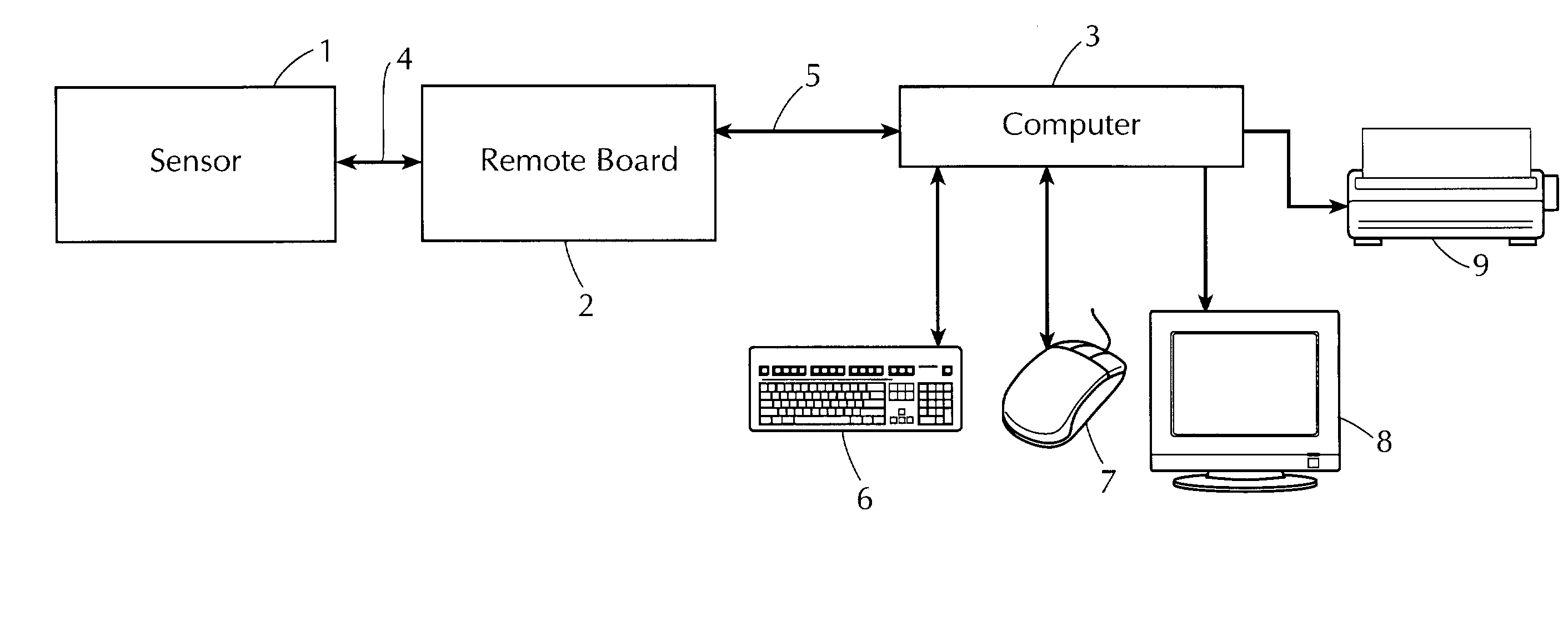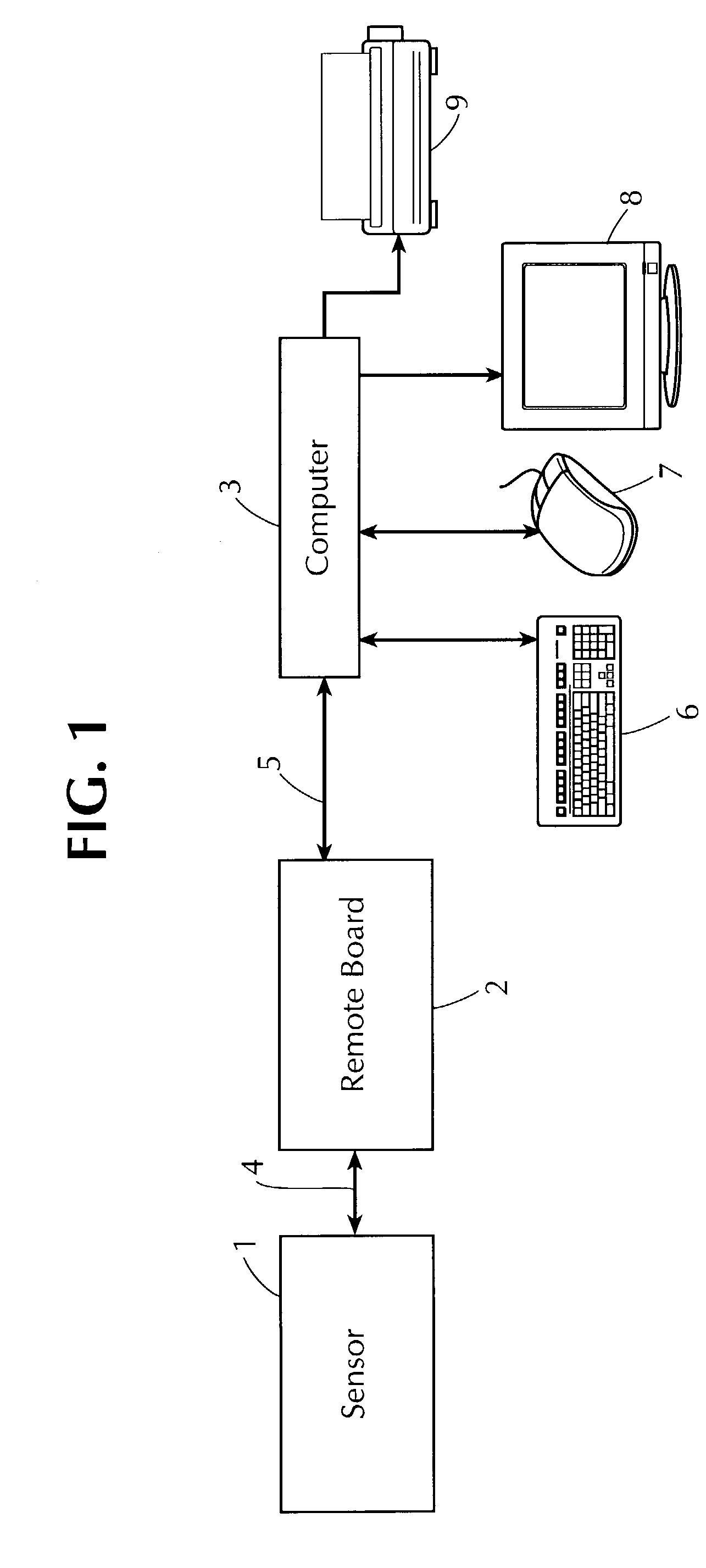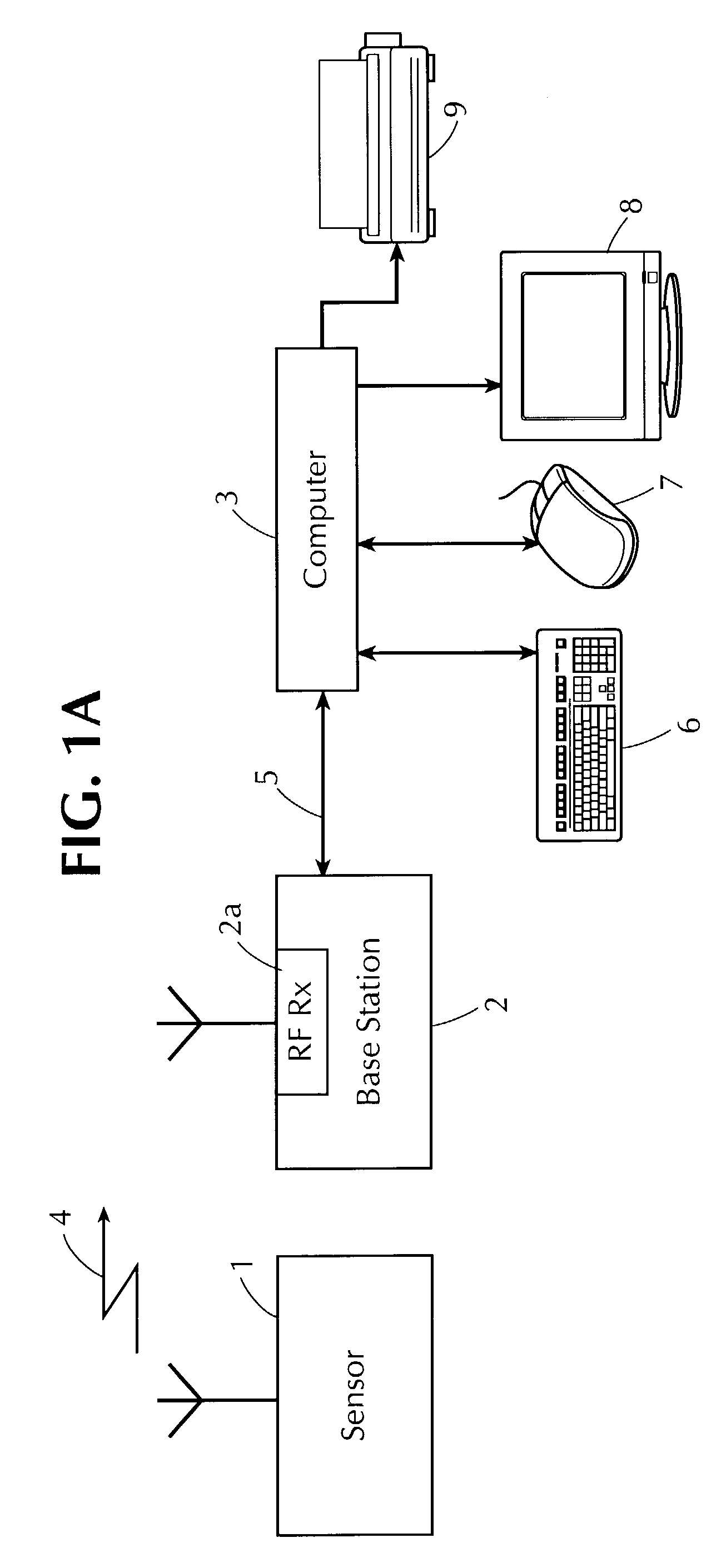Method of event detection for intraoral image sensor
an image sensor and event detection technology, applied in the field of filmless dental radiography system, can solve the problems of reducing manufacturing yield, and unable to meet the requirements of the operation
- Summary
- Abstract
- Description
- Claims
- Application Information
AI Technical Summary
Benefits of technology
Problems solved by technology
Method used
Image
Examples
Embodiment Construction
[0025]A first embodiment of a filmless dental radiography system in accordance with the present invention is depicted in FIG. 1. As can be seen, the system includes an electronic sensor 1, a remote board 2 and a host computer 3. The sensor 1 communicates with the remote board 2 over a bi-directional wired link 4, and the remote board 2 communicates with the computer 3 over a bi-directional wired link 5. The remote board 2 performs many control and processing functions, which may include, among other things, controlling the operation of the sensor 1, reading out data from the sensor 1, effecting analog-to-digital conversion and processing the data read out of the sensor 1 into a form suitable for transmission to the host computer 3.
[0026]An alternate embodiment of a filmless dental radiography system according to the present invention is depicted in FIG. 1A. This system includes an intraoral sensor 1, a base station 2 that includes a radio frequency (RF) receiver 2a and data output p...
PUM
 Login to View More
Login to View More Abstract
Description
Claims
Application Information
 Login to View More
Login to View More - R&D
- Intellectual Property
- Life Sciences
- Materials
- Tech Scout
- Unparalleled Data Quality
- Higher Quality Content
- 60% Fewer Hallucinations
Browse by: Latest US Patents, China's latest patents, Technical Efficacy Thesaurus, Application Domain, Technology Topic, Popular Technical Reports.
© 2025 PatSnap. All rights reserved.Legal|Privacy policy|Modern Slavery Act Transparency Statement|Sitemap|About US| Contact US: help@patsnap.com



